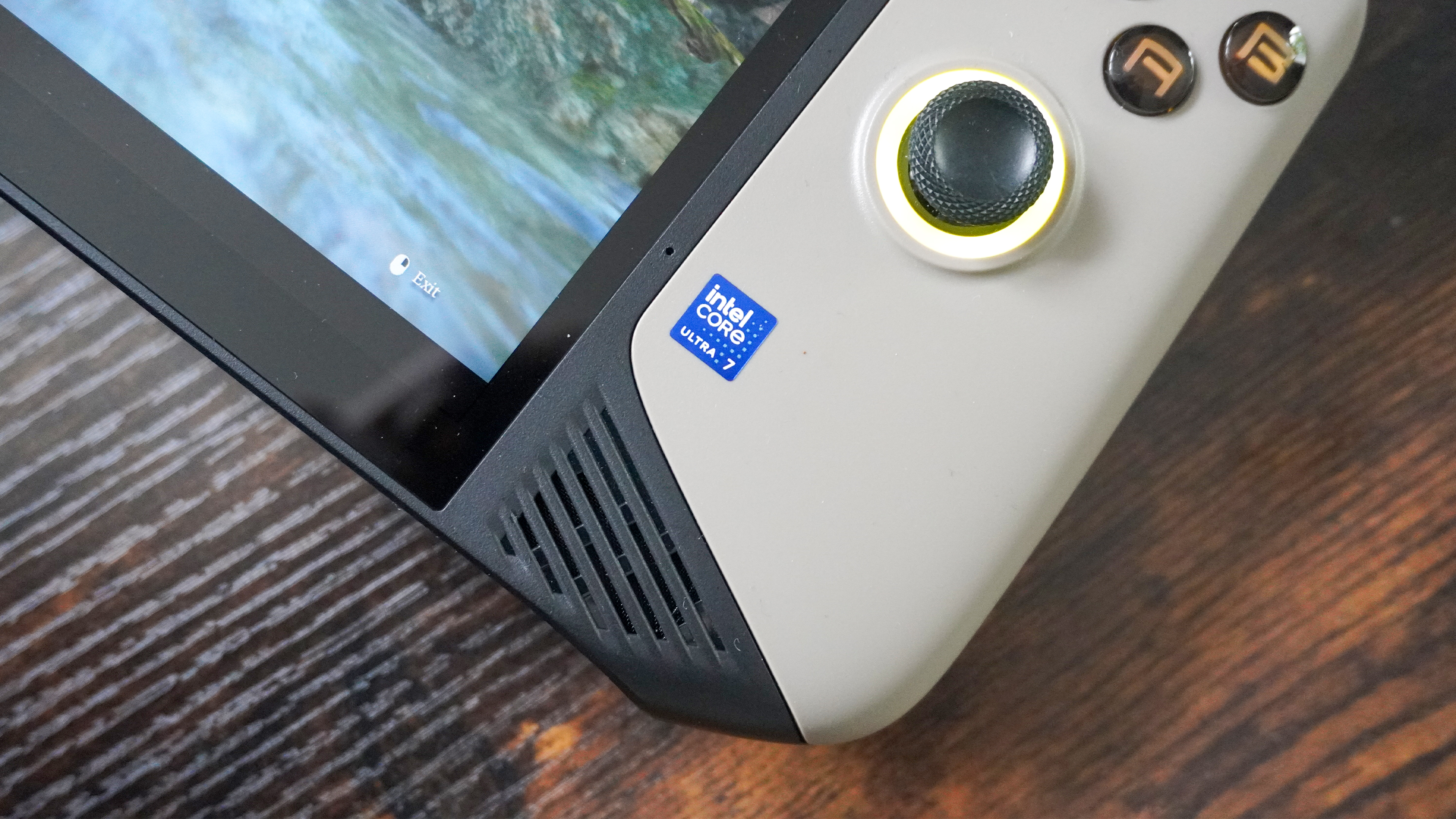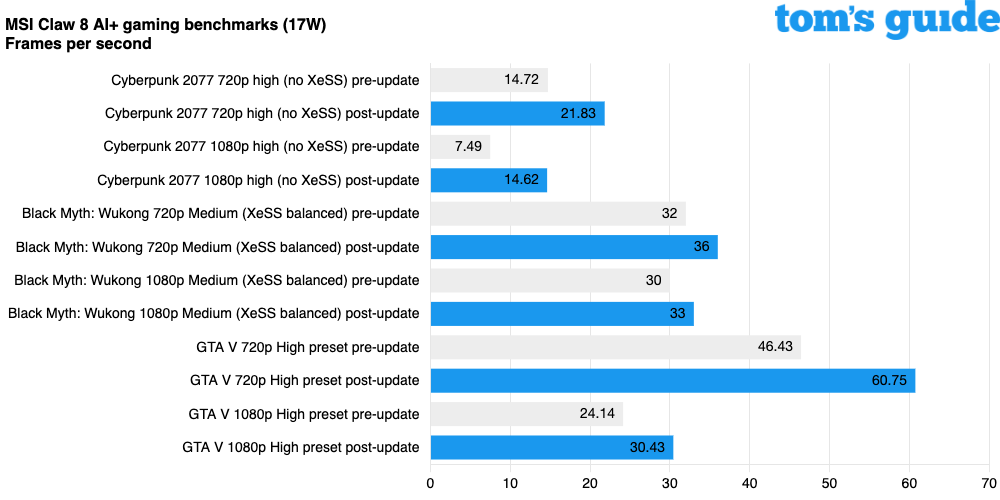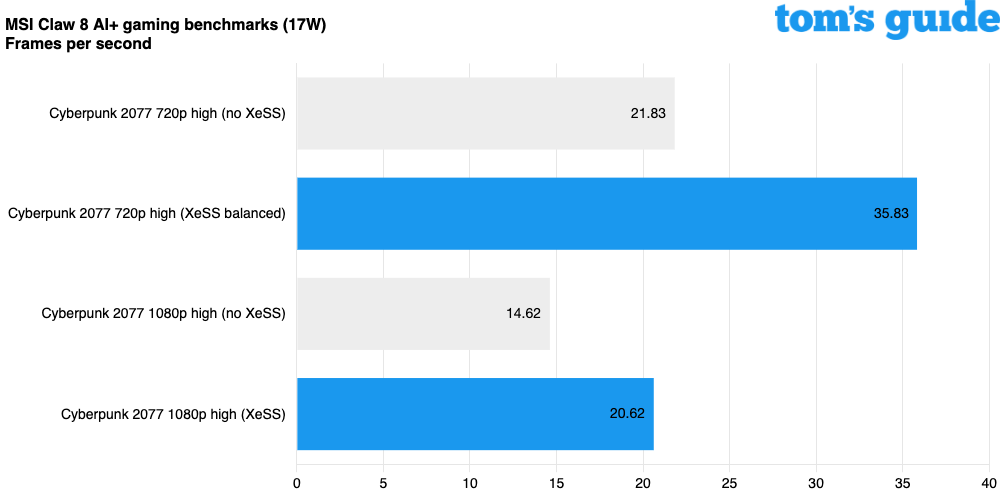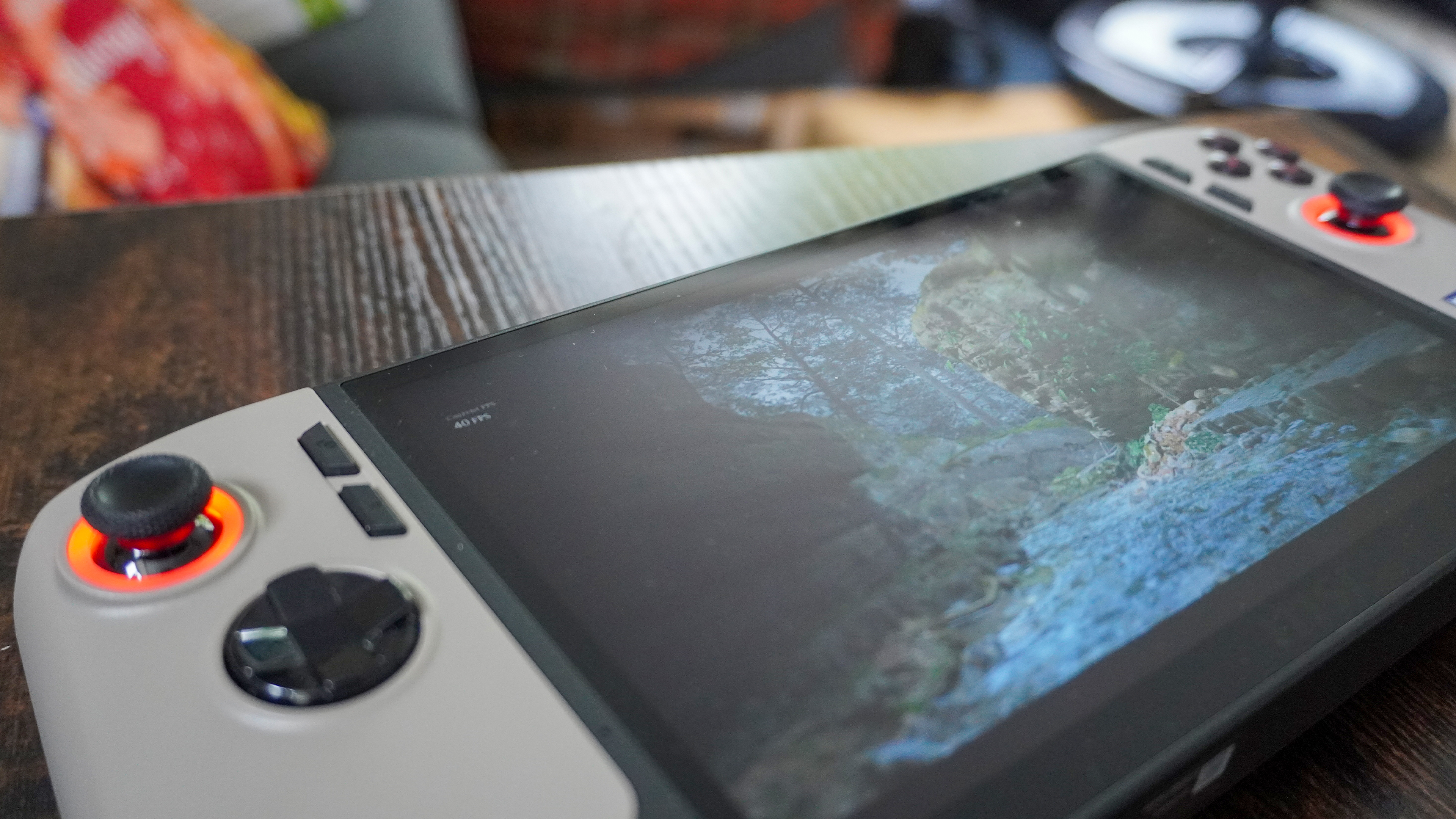I dismissed the MSI Claw 8 AI+ — then Intel's game-changing update shut me up
I dismissed the Claw 8 AI+, now Intel is making me eat my own words

As you can tell by my hype levels around the AMD-armed MSI Claw A8 BZ2EM, I’ve been quick to count-out the Claw 8 AI+ packing Intel inside.
That’s not to say it’s a bad device — actually it’s rather good, and I know Intel has proclaimed that gaming handhelds are the company’s “number one priority.” But from the wider support of AMD’s FSR optimizations vs Intel’s XeSS, to the better power efficiency in my own use, anything with Ryzen in the name is what my money's on.
But a huge driver update from Intel just made me eat my own words. I’ve been testing this for the past few weeks (including during my long haul flight over to Computex 2025) to see what performance and power efficiency gains I can get.
Spoiler alert: Intel has basically caught up!
This is the most powerful 7-inch gaming handheld you can buy — packing the Intel Core Ultra 7 258V (with that shiny new driver update), 32GB LPDDR5 RAM and a 512GB SSD. On top of that, the FHD 120Hz display is gorgeous.
Same as above, but with a larger 1920 x 1200 display that looks brighter in use, alongside a 1TB SSD inside and a bigger battery to power it all.
What does the new update do?

Back at the end of April, Intel pushed out a performance update to improve gaming on its 200V Lunar Lake chips — specifically targeting the Claw 8 AI+ and Claw 7 AI+. If you don’t have it yet, head over to Intel’s driver site and download 32.0.101.6734 or newer.
In this update, Intel is promising two things:
- “Significant uplifts” in average FPS — making your games feel faster.
- “Improved frame pacing” — by improving the 1% lows (also called the 99th percentile), this closes the gap between the highest possible FPS and the lowest so your games feel smoother too.
And all of this is happening at the custom 17W profile in the Claw, which means you’re getting more out of your graphics for the same amount of power consumption — at least on paper, so let’s put that to the test.
Get instant access to breaking news, the hottest reviews, great deals and helpful tips.
A bump in the road

Most interestingly, I started this whole thing not feeling so confident. That’s because the 3DMark benchmarks were actually slightly lower than pre-update.

I know the rudimentary 3DMarks aren’t necessarily the most accurate reading compared to actual in-game performance, but it’s still a graphics benchmark. This made me fear that things may have actually headed in the wrong direction.
A red herring
But then I opened my regular rotation of in-flight games and…well…the difference is night and day!

This makes me think that Intel has quietly reassigned some of that power away from the CPU in favor of the GPU. 3DMark is a graphics test, but there is a CPU component to it as well. And the end result is benchmarks that look comparatively weaker, but game performance is boosted dramatically.
But of course. This isn’t really how you play on handhelds — you take any resolution scaling and frame generation techniques you can get, and the resulting difference is big.

Whether I was speeding through Mexico at over 200 MPH in Forza Horizon 5 or walking my way through the densely populated Night City in Cyberpunk 2077, there was no stuttering in any of these games. Frame rates were impressively smooth for a device this small drawing as little power as it is.
Longevity assured

Luckily, the flight I was on had power outlets so I could play games the whole time. But I did want to check the battery, so I unplugged and fired up Forza Horizon 5.

This is the proof that I needed to see. You’re getting more out of that GPU while also maintaining pretty much the same battery life. Of course, you can reduce that power to 8 watts to get even more if you dabble in some less demanding games too!
The only obstacle is the price

With the 7-inch model at $899 and the Claw 8 AI+ you see here weighing in at $999, these are pricey investments for a gaming handheld. For context, the Lenovo Legion Go S with SteamOS is shipping for $600 — granted it’s got a lower-powered AMD Ryzen Z2 Go chip in there, but the point stands!
It goes even further when you realize that the same Legion Go S with Windows is $200 more. Turns out not only does Windows 11 kind of suck on a gaming handheld (and to everybody only discovering this now, we’ve been telling you for nearly a year now), turns out it’s pricey too.
This is indeed the most powerful handheld you can get, and Intel has officially thrown its hat into the ring to square up to AMD. But now, we need something like this to be more affordable to really duke it out.
More from Tom's Guide
- I got roasted for loving RTX 5060 gaming laptops — so I hit back with hard benchmarks
- I played Call of Duty on AMD’s Radeon RX 9070 — and this GPU could steal the mid-range crown from Nvidia’s RTX 5070
- Best of Computex 2025: The top 15 gadgets of the world’s biggest computing show

Jason brings a decade of tech and gaming journalism experience to his role as a Managing Editor of Computing at Tom's Guide. He has previously written for Laptop Mag, Tom's Hardware, Kotaku, Stuff and BBC Science Focus. In his spare time, you'll find Jason looking for good dogs to pet or thinking about eating pizza if he isn't already.
You must confirm your public display name before commenting
Please logout and then login again, you will then be prompted to enter your display name.


